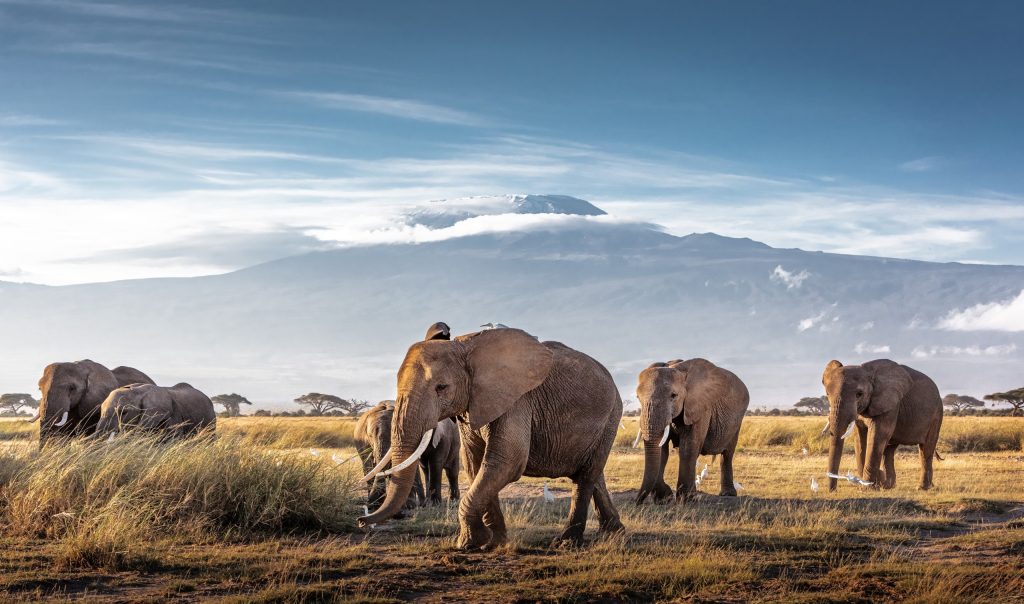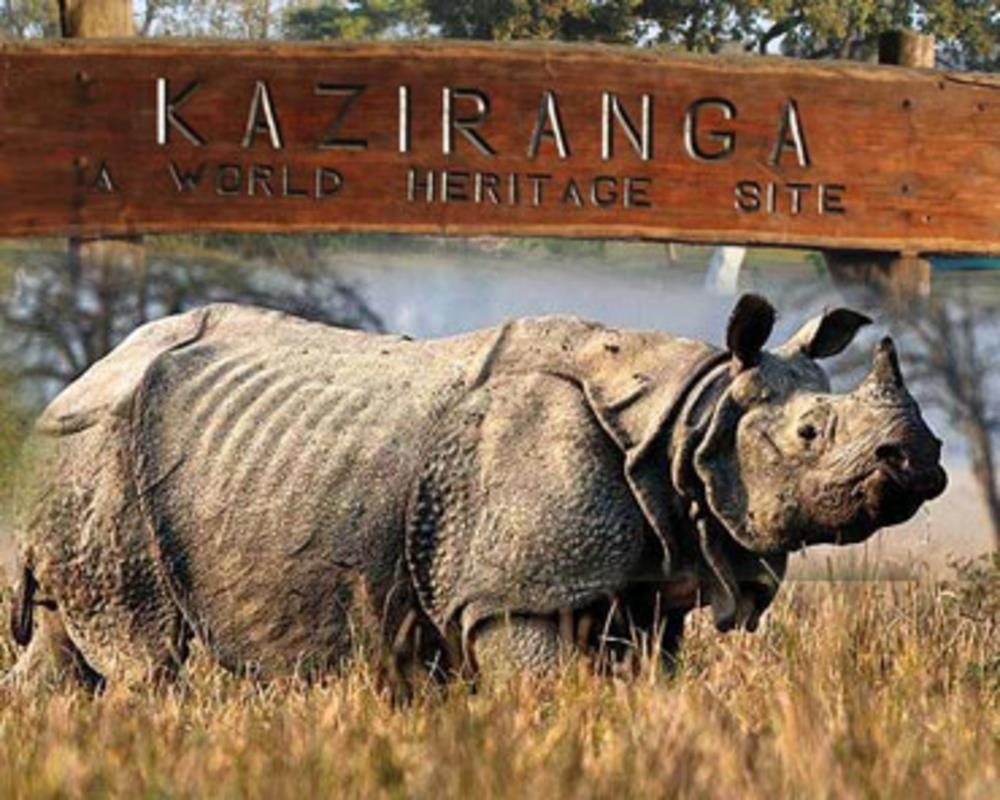Kaziranga National Park is a national park in the Golaghat and Nagaon districts of the state of Assam, India. The sanctuary, which hosts two-thirds of the world’s great one-horned rhinoceroses, is a World Heritage Site. According to the census held in March 2015, which was jointly conducted by the Forest Department of the Government of Assam and some recognized wildlife NGOs, the rhino population in Kaziranga National Park is 2,401. It comprises 1,651 adult rhinos (663 male, 802 are females, 186 unsexed); 294 sub-adults (90 males, 114 females, 90 unsexed); 251 juveniles and 205 cubs. Kaziranga is home to the highest density of tigers among protected areas in the world, and was declared a Tiger Reserve in 2006. The park is home to large breeding populations of elephants, wild water buffalo, and swamp deer. Kaziranga is recognized as an Important Bird Area by BirdLife International for conservation of avifaunal species. When compared with other protected areas in India, Kaziranga has achieved notable success in wildlife conservation. Located on the edge of the Eastern Himalaya biodiversity hotspot, the park combines high species diversity and visibility. Kaziranga is a vast expanse of tall elephant grass, marshland, and dense tropical moist broadleaf forests, criss-crossed by four major rivers, including the Brahmaputra, and the park includes numerous small bodies of water. Kaziranga has been the theme of several books, songs, and documentaries. The park celebrated its centennial in 2005 after its establishment in 1905 as a reserve forest. The history of Kaziranga as a protected area can be traced back to 1904, when Mary Curzon, Baroness Curzon of Kedleston, the wife of the Viceroy of India, Lord Curzon of Kedleston, visited the area. After failing to see a single rhinoceros, for which the area was renowned, she persuaded her husband to take urgent measures to protect the dwindling species which he did by initiating planning for their protection. On 1 June 1905, the Kaziranga Proposed Reserve Forest was created with an area of 232 km2 (90 sq mi). Over the next three years, the park area was extended by 152 km2 (59 sq mi), to the banks of the Brahmaputra River. In 1908, Kaziranga was designated a “Reserve Forest”. In 1916, it was redesignated the “Kaziranga Game Sanctuary” and remained so till 1938, when hunting was prohibited and visitors were permitted to enter the park. The Kaziranga Game Sanctuary was renamed the “Kaziranga Wildlife Sanctuary” in 1950 by P. D. Stracey, the forest conservationist, in order to rid the name of hunting connotations. In 1954, the government of Assam passed the Assam (Rhinoceros) Bill, which imposed heavy penalties for rhinoceros poaching. Fourteen years later, in 1968, the state government passed the Assam National Park Act of 1968, declaring Kaziranga a designated national park. The 430 km2 (166 sq mi) park was given official status by the central government on 11 February 1974. In 1985, Kaziranga was declared a World Heritage Site by UNESCO for its unique natural environment. Kaziranga has been the target of several natural and man-made calamities in recent decades. Floods caused by the overflow of the river Brahmaputra, leading to significant losses of animal life. Encroachment by people along the periphery has also led to a diminished forest cover and a loss of habitat. An ongoing separatist movement in Assam led by the United Liberation Front of Assam (ULFA) has crippled the economy of the region,[8] but Kaziranga has remained unaffected by the movement; indeed, instances of rebels from the United Liberation Front of Assam protecting the animals and, in extreme cases, killing poachers, have been reported since the 1980s. The park experiences three seasons: summer, monsoon, and winter. The winter season, between November and February, is mild and dry, with a mean high of 25 °C (77 °F) and low of 5 °C (41 °F). During this season, beels and nallahs (water channels) dry up. The summer season between March and May is hot, with temperatures reaching a high of 37 °C (99 °F). During this season, animals usually are found near water bodies. The rainy monsoon season lasts from June to September, and is responsible for most of Kaziranga’s annual rainfall of 2,220 mm (87 in). During the peak months of July and August, three-fourths of the western region of the park is submerged, due to the rising water level of the Brahmaputra. It was found that 70% of the National Park was flooded as on 3 August 2016. The flooding causes most animals to migrate to elevated and forested regions outside the southern border of the park, such as the Mikir hills. 540 animals,including 13 rhinos and mostly hog deers perished in unprecedented floods of 2012. However, occasional dry spells create problems as well, such as food shortages and occasional forest fires. Observing the wildlife, including birding, is the main visitor activity in and around the park. Guided tours by elephant or Jeep are available. Hiking is prohibited in the park to avoid potential human-animal conflicts. Observation towers are situated at Sohola, Mihimukh, Kathpara, Foliamari, and Harmoti for wildlife viewing. The Lower Himalayan peaks frame the park’s landscape of trees and grass interspersed with numerous ponds. An interpretation centre is being set up at the Bagori range of Kaziranga, to help visitors learn more about the park. The park remains closed for visitors from 1 May to end-October due to monsoon rains. Four tourist lodges at Kohora and three tourist lodges outside the park are maintained by the Department of Environment and Forests, Government of Assam. Private resorts are available outside the park borders. Increase in tourist inflow has led to the economic empowerment of the people living at the fringes of the park, by means of tourism related activities, encouraging a recognition of the value of its protection. A survey of tourists notes that 80 percent found rhino sightings most enjoyable and that foreign tourists were more likely to support park protection and employment opportunities financially, while local tourists favored support for veterinary services. Recently set up Kaziranga National Orchid and Biodiversity Park established at Durgapur village is a latest attraction to the tourists. It houses more than 500 species of orchids, 132 varieties of sour fruits and leafy vegetables, 12 species of cane, 46 species of bamboo and a large varieties of local fishes.
Gallery


